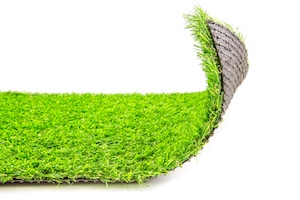From a valuable alternative in areas with challenging climatic conditions, artificial turf is becoming the product of choice.
May 1, 2018

 Artificial turf is experiencing greater demand in a number of markets, according to a recent study, The Global Market for Artificial Turf 2018, published by Applied Market Information Ltd. (AMI Consulting; Bristol, UK). A key feature of artificial turf is its capability to withstand more intensive use than natural grass, a major benefit for many sports field owners. For home owners and architects, it provides a desirable landscaping option.
Artificial turf is experiencing greater demand in a number of markets, according to a recent study, The Global Market for Artificial Turf 2018, published by Applied Market Information Ltd. (AMI Consulting; Bristol, UK). A key feature of artificial turf is its capability to withstand more intensive use than natural grass, a major benefit for many sports field owners. For home owners and architects, it provides a desirable landscaping option.
In each application, artificial turf has developed from being a valuable alternative where climatic conditions are challenging—too much or too little rain, high heat or freezing temperatures—to becoming the product of choice.
In the sports sector, artificial turf and component producers have worked with governing bodies including FIFA, World Rugby and the International Hockey Federation to define and meet the needs of each sport and its players. Artificial turf available today can match the performance of natural turf while being more durable in almost all kinds of weather. Also, increasing availability of the field can make it an income source for local communities and sports clubs.
In the leisure and landscape sectors, artificial turf development has focused on producing a broad spectrum of products to suit the appearance, feel, intensity of use and price point for many applications and consumers. These developments, coupled with its availability through multiple channels, has led to a boom in demand, said AMI Consulting’s report.
Artificial turf may comprise several polymeric components. The yarns are made from polyethylene (PE), polypropylene and polyamide. For backing, coating, infill and shock pads, the main materials are styrene butadiene latex, styrene butadiene rubber, polyurethane, PE, thermoplastic elastomers, ethylene propylene diene monomer rubber and organic materials. Selection of components and materials used in artificial turf systems, particularly for sports installations, is a key issue facing the industry today, according to the study.
For new installations, buyers seek to balance performance and durability with environmental, user experience and cost considerations. Replacing old turf as it reaches its end of life is creating strong demand for new artificial turf, but the industry also has to manage the re-use, recycling or disposal of the increasing volumes of turf that need replacing.
The report further notes that the industry comprises numerous participants, from small family-owned producers to global organizations. In the last two years, the industry has seen significant structural change including merger and acquisition activity among some of the largest established players such as FieldTurf Tarkett, TenCate and PolyTan. It has also seen the emergence of several recent entrants in China, which now hosts some of the world’s largest producers, including CC Grass.
About the Author(s)
You May Also Like




